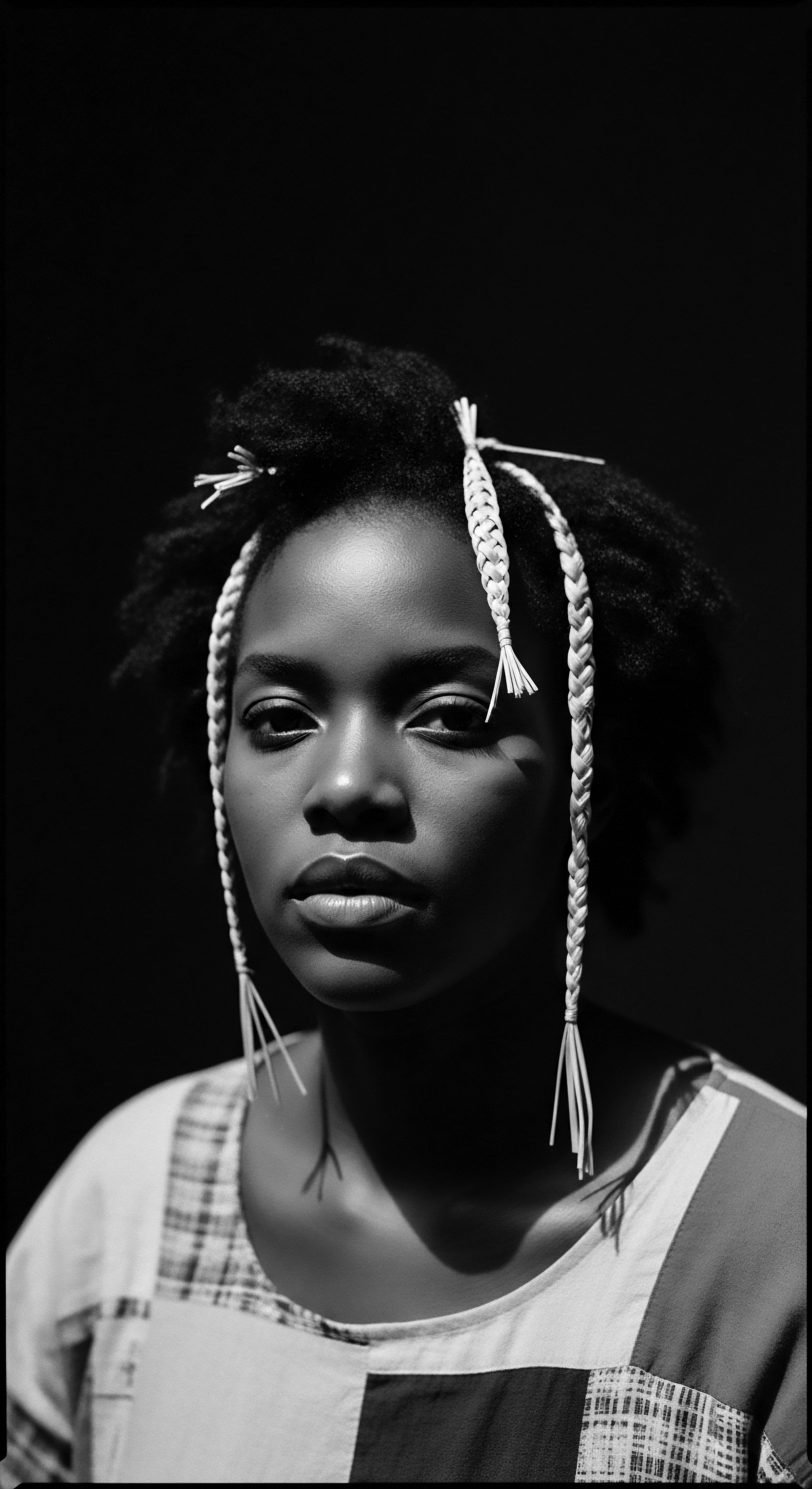
Fundamentals
The concept of Textured Hair Vitality extends far beyond a mere physical condition of the hair strand; it is a profound declaration of life, resilience, and ancestral memory. For Roothea, this term signifies the inherent strength and flourishing spirit woven into the very structure of textured hair, particularly within Black and mixed-race lineages. It is an understanding that recognizes hair not merely as a biological outgrowth, but as a living archive, holding stories, wisdom, and the enduring spirit of those who came before us. This initial contemplation invites us to perceive hair as a conduit to the past, a vibrant testament to survival, and a continuous thread connecting generations.
When we speak of vitality in this context, we refer to the holistic health and inherent capacity of textured hair to thrive, reflecting an inner well-being that resonates with historical practices and cultural wisdom. This initial exploration provides a foundational perspective for those new to this rich domain, illustrating how the physical attributes of coils, kinks, and curls are intrinsically linked to a deeper, shared heritage. It is a concept that encourages a respectful and attentive approach to care, acknowledging the unique needs and historical journey of every strand.
The physical aspects of Textured Hair Vitality encompass the hair’s ability to retain moisture, exhibit elasticity, and resist breakage. These attributes are not isolated biological phenomena; they are deeply influenced by the collective knowledge passed down through generations concerning ingredients, techniques, and communal care rituals. From ancient African societies, where hair was meticulously tended with natural oils and plant-based concoctions, to the present day, the pursuit of hair vitality has always been intertwined with cultural continuity.
This initial interpretation underscores the living quality of textured hair, where each coil and curl carries the echoes of a rich past. It prompts us to consider the historical context of hair care, moving beyond superficial aesthetics to appreciate the deep, intentional practices that sustained hair health and cultural identity across diverse environments and challenges.
Textured Hair Vitality is the enduring spirit and inherent robustness of textured hair, a living archive of ancestral memory and cultural resilience.
The fundamental understanding of Textured Hair Vitality calls for a recognition of its dynamic nature. It is not a static state but a continuous process of growth, adaptation, and expression, shaped by both individual experiences and the collective wisdom of a community. This holistic outlook provides a welcoming entry point into the deeper considerations of textured hair’s profound heritage.
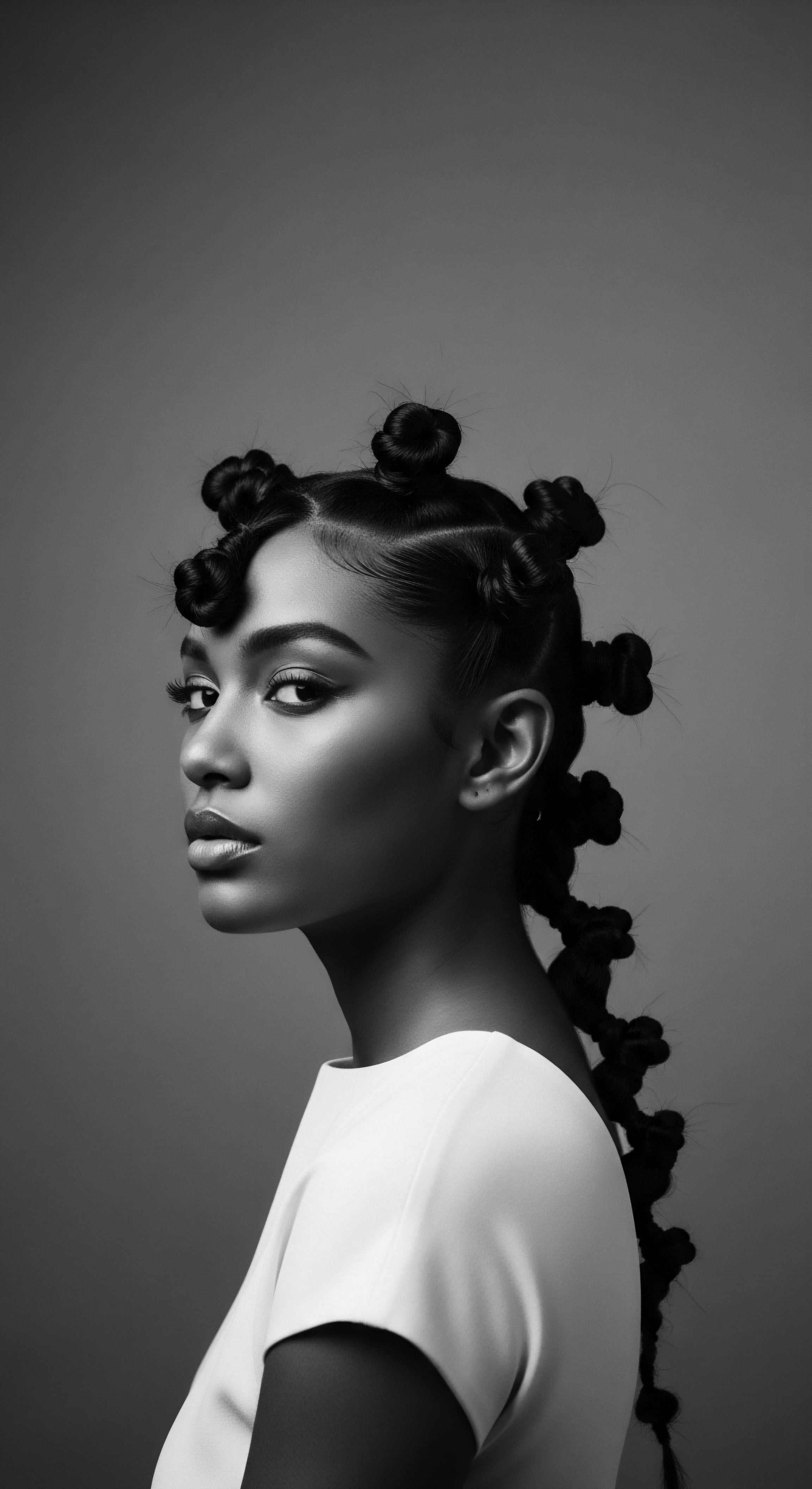
The Inherited Blueprint of Care
Within the ancestral framework, Textured Hair Vitality begins with the very genetic coding that gives rise to the unique curl patterns of Black and mixed-race hair. This genetic inheritance carries a blueprint for care, a subtle instruction manual refined over millennia through environmental adaptation and traditional practices. The earliest care rituals were born from an intimate connection with the land, utilizing indigenous botanicals and communal knowledge to sustain hair health in diverse climates. These initial interactions with nature laid the groundwork for a heritage of care that prioritizes moisture, protection, and gentle handling.
The understanding of hair as a spiritual and social marker in many African societies meant that its care was never a trivial matter. Hair was adorned for ceremonies, styled to denote social standing, and tended with reverence. This deeply embedded cultural value meant that the practices contributing to hair vitality were not simply functional; they were acts of cultural affirmation, strengthening communal bonds and preserving identity.
- Moisture Retention ❉ The natural structure of textured hair, with its unique coil and curl patterns, often makes it prone to dryness. Ancestral practices consistently focused on retaining moisture using natural oils and butters.
- Scalp Health ❉ A healthy scalp is the foundation for hair vitality. Traditional methods emphasized scalp massages and the use of herbal infusions to cleanse and nourish the scalp.
- Protective Styling ❉ Many traditional hairstyles, such as braids and twists, served as protective measures, shielding the hair from environmental stressors and reducing manipulation.
These foundational principles, originating from a deep respect for hair’s natural state and its cultural significance, remain relevant in contemporary approaches to Textured Hair Vitality. They represent the initial echoes from the source, guiding us toward practices that honor the hair’s intrinsic needs and its ancestral story.
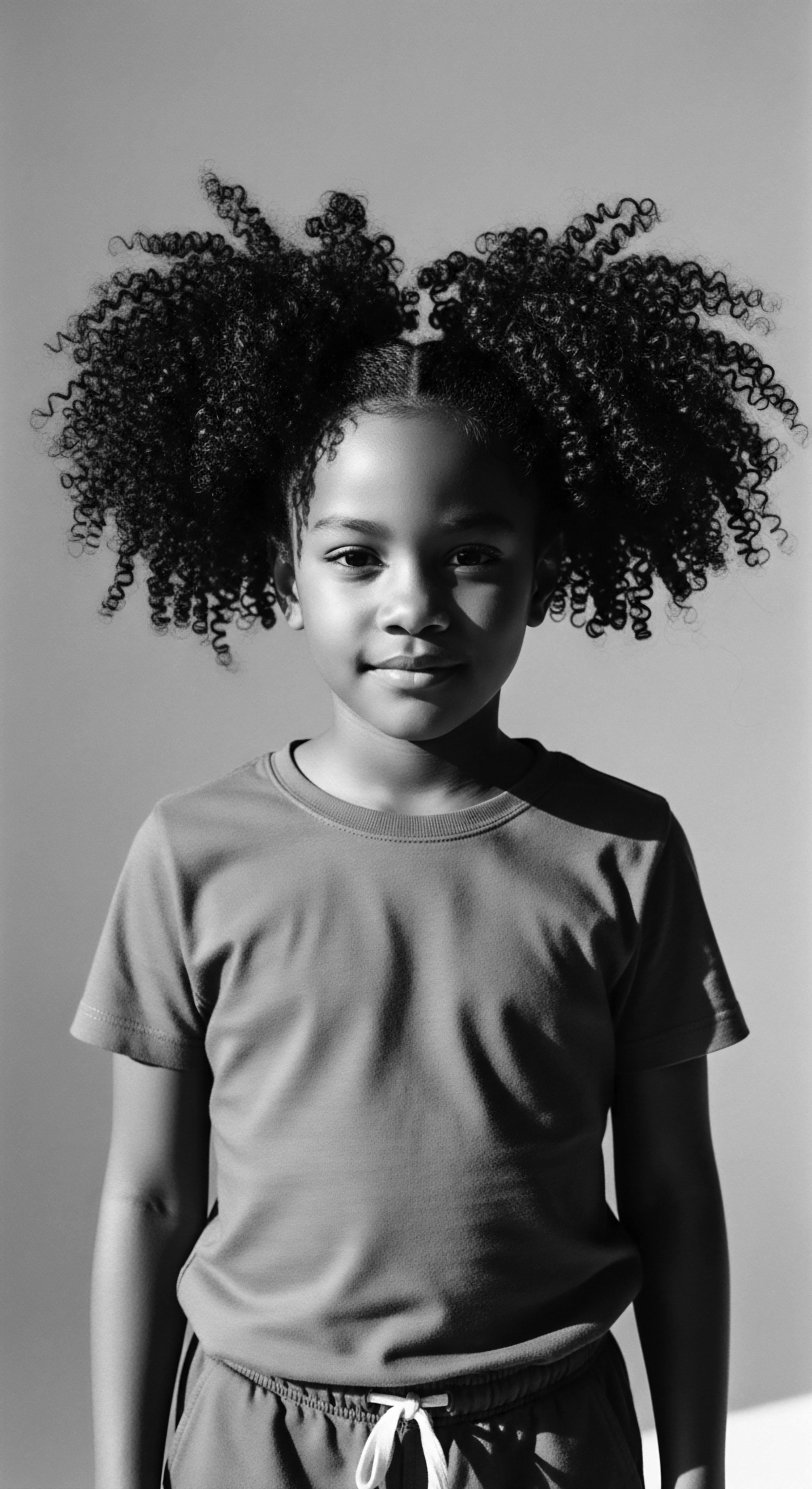
Intermediate
Moving beyond the foundational understanding, the intermediate interpretation of Textured Hair Vitality delves into its dynamic interplay with identity, cultural expression, and historical adaptation. It is a concept that acknowledges the hair’s capacity to not only endure but to actively participate in the ongoing narrative of Black and mixed-race experiences. This level of comprehension invites a deeper appreciation for the adaptive genius of textured hair, recognizing how it has served as a canvas for communication, a symbol of resistance, and a tangible link to collective memory across generations.
The historical journey of textured hair reveals its remarkable ability to convey intricate social meanings. In pre-colonial African societies, hairstyles served as visual markers, communicating a person’s tribal affiliation, social standing, age, marital status, or even spiritual beliefs. This sophisticated system of non-verbal communication speaks volumes about the intrinsic value placed upon hair, transforming it into a living testament to cultural richness and communal cohesion. The vitality of hair in these contexts was thus inextricably linked to its communicative power, its ability to narrate identity without uttering a single word.
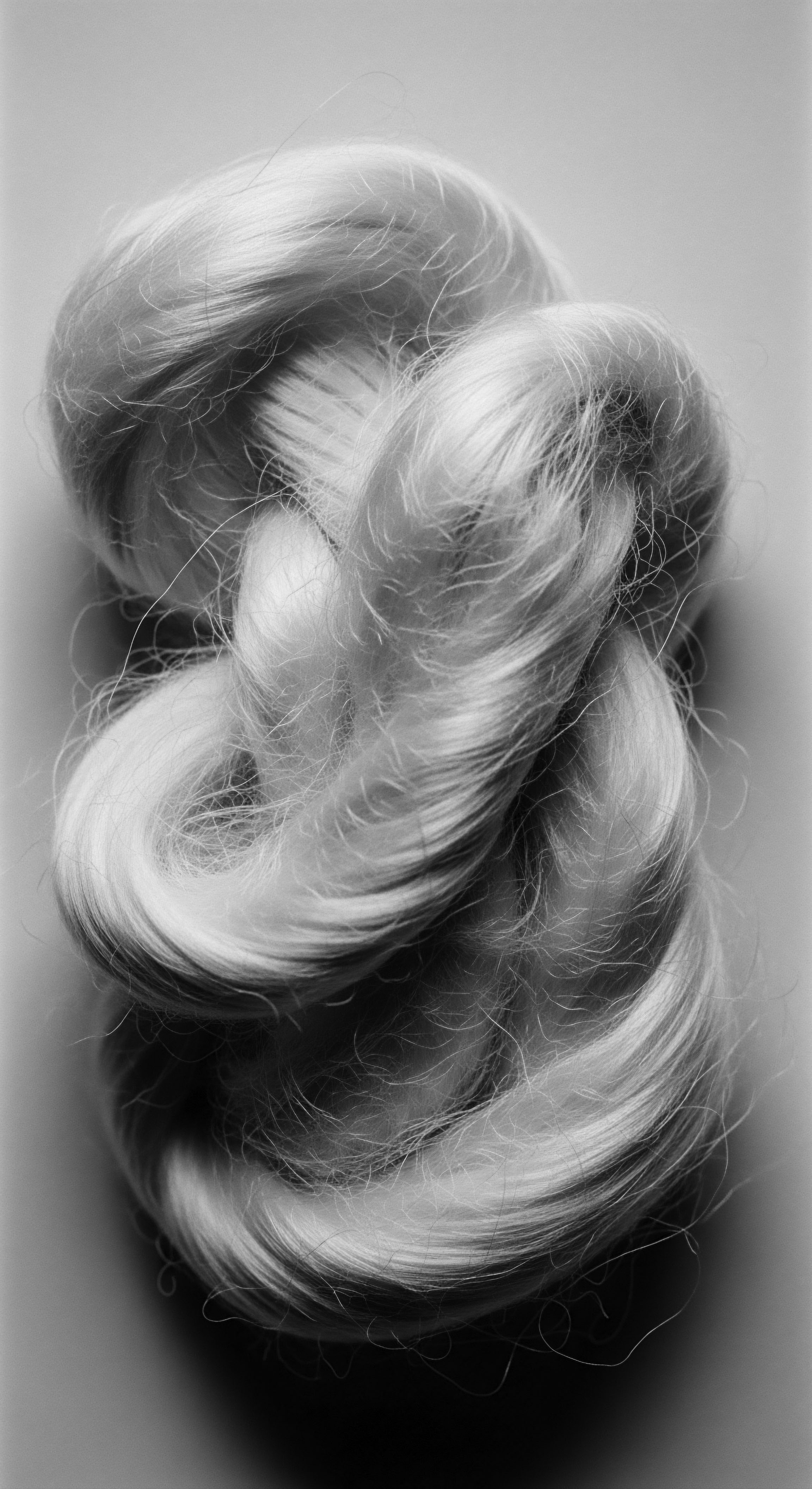
The Resilience Encoded in Each Coil
The intermediate understanding of Textured Hair Vitality requires us to acknowledge the historical adversities faced by textured hair and its communities. During periods of enslavement and colonialism, attempts were made to strip individuals of their cultural identity, often targeting hair as a primary means of dehumanization. Yet, even under oppressive conditions, the vitality of textured hair persisted, becoming a silent, yet potent, form of defiance. Enslaved Africans continued to practice hair care rituals, often adapting available resources to maintain their hair, preserving a tangible link to their heritage.
Consider the profound example of enslaved African women during the Transatlantic slave trade, particularly rice farmers, who braided rice seeds into their hair. This ingenious act was not merely about sustenance; it was a powerful act of cultural continuity and survival. These seeds, hidden within the intricate patterns of their braids, represented both a physical means of establishing agriculture in new lands and a symbolic carrying of ancestral knowledge, ensuring the continuation of their heritage in the face of forced displacement.
The hair, therefore, became a vessel of life, a repository of hope, and a silent promise of future vitality. This instance powerfully demonstrates how Textured Hair Vitality is not just about physical health, but about the hair’s role in the survival and transmission of cultural legacy.
Textured Hair Vitality embodies the hair’s enduring capacity to express identity and resist oppression, a silent language spoken through coils and patterns.
The continued existence of traditional braiding techniques, the communal aspect of hair care, and the resurgence of natural hair movements today are direct lineages from these historical acts of resilience. They underscore that Textured Hair Vitality is not a passive state but an active, inherited capacity for cultural assertion and self-preservation.
Understanding this intermediate level of Textured Hair Vitality compels us to recognize the deep, enduring connection between the physical state of textured hair and the socio-political landscapes it has navigated. It invites a compassionate and informed approach to hair care, one that honors the past while supporting the thriving present and future of textured hair.
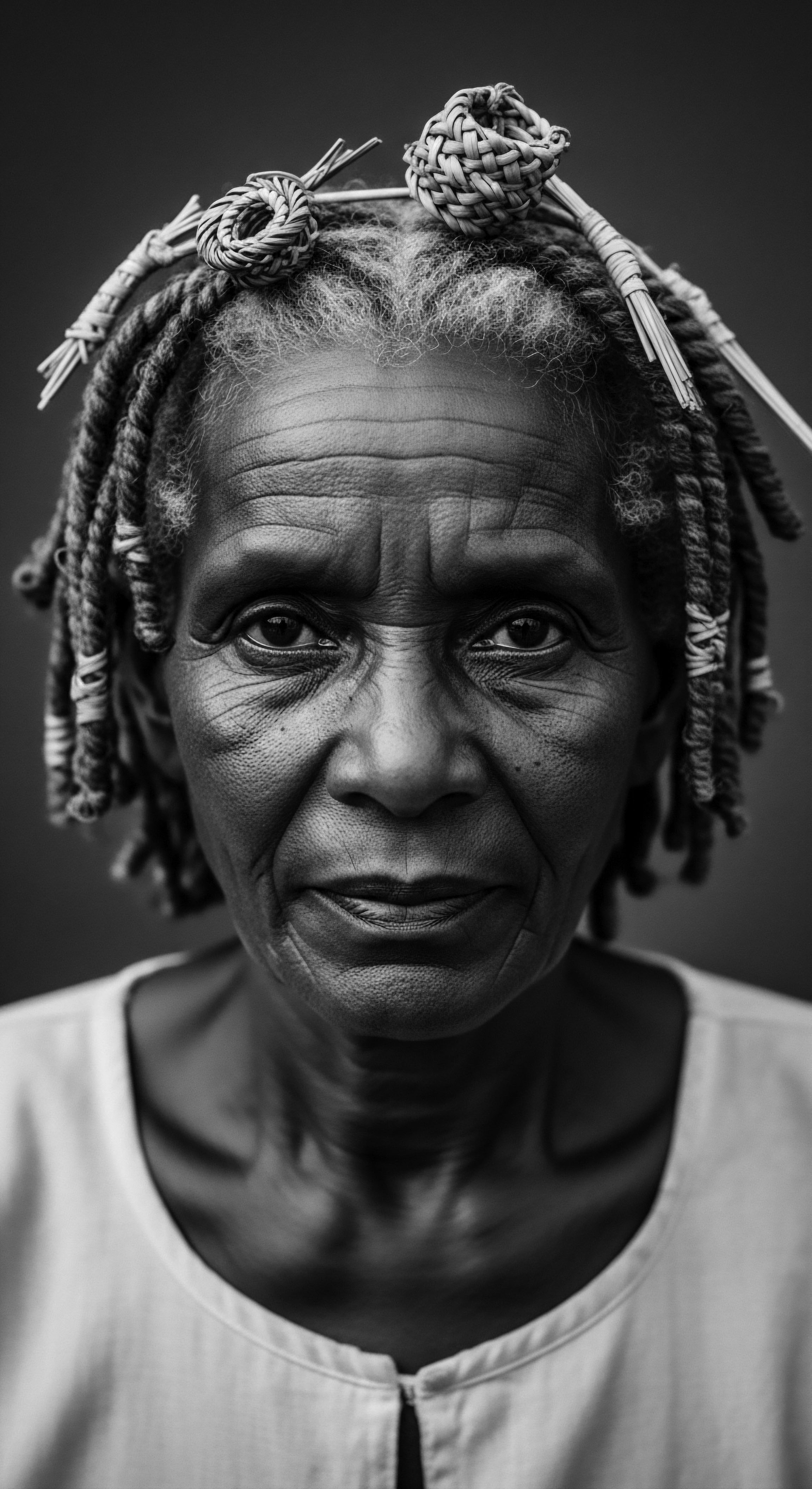
Evolution of Care ❉ From Communal Hearth to Modern Alchemy
The methods of caring for textured hair have undergone significant evolution, yet a continuous thread of wisdom connects ancient practices to contemporary understanding. This evolution reflects a persistent dedication to maintaining hair vitality, adapting to new circumstances while holding fast to core principles.
A table illustrating the evolution of hair care practices and their connection to vitality provides a clear visual ❉
| Aspect of Vitality Moisture & Nourishment |
| Ancestral Practices (Echoes from the Source) Application of shea butter, coconut oil, animal fats, and various plant extracts like aloe vera. |
| Contemporary Approaches (The Tender Thread) Use of deep conditioners, leave-in treatments, specialized oils (e.g. jojoba, argan), and hydrating creams. |
| Aspect of Vitality Protection & Styling |
| Ancestral Practices (Echoes from the Source) Intricate braiding, twisting, and knotting for protection and communication. Headwraps for preservation. |
| Contemporary Approaches (The Tender Thread) Modern protective styles (braids, twists, weaves), silk/satin bonnets, and pillowcases to reduce friction. |
| Aspect of Vitality Scalp Health |
| Ancestral Practices (Echoes from the Source) Herbal rinses, clay treatments, and gentle massage to stimulate blood flow and cleanse. |
| Contemporary Approaches (The Tender Thread) Targeted scalp serums, clarifying shampoos, and specialized massage tools for follicular health. |
| Aspect of Vitality Detangling & Manipulation |
| Ancestral Practices (Echoes from the Source) Finger detangling, use of wide-tooth combs carved from wood or bone, and water-based softening. |
| Contemporary Approaches (The Tender Thread) Wide-tooth combs, detangling brushes, and pre-poo treatments to minimize breakage. |
| Aspect of Vitality The enduring principles of protection, nourishment, and gentle handling remain central to textured hair vitality across historical epochs, adapting to new resources while honoring ancestral wisdom. |
This progression from the communal hearth to modern alchemy demonstrates a continuous dedication to nurturing Textured Hair Vitality. Each adaptation, from simple plant extracts to complex formulations, reflects a deep-seated respect for the hair’s unique structure and its profound cultural weight.
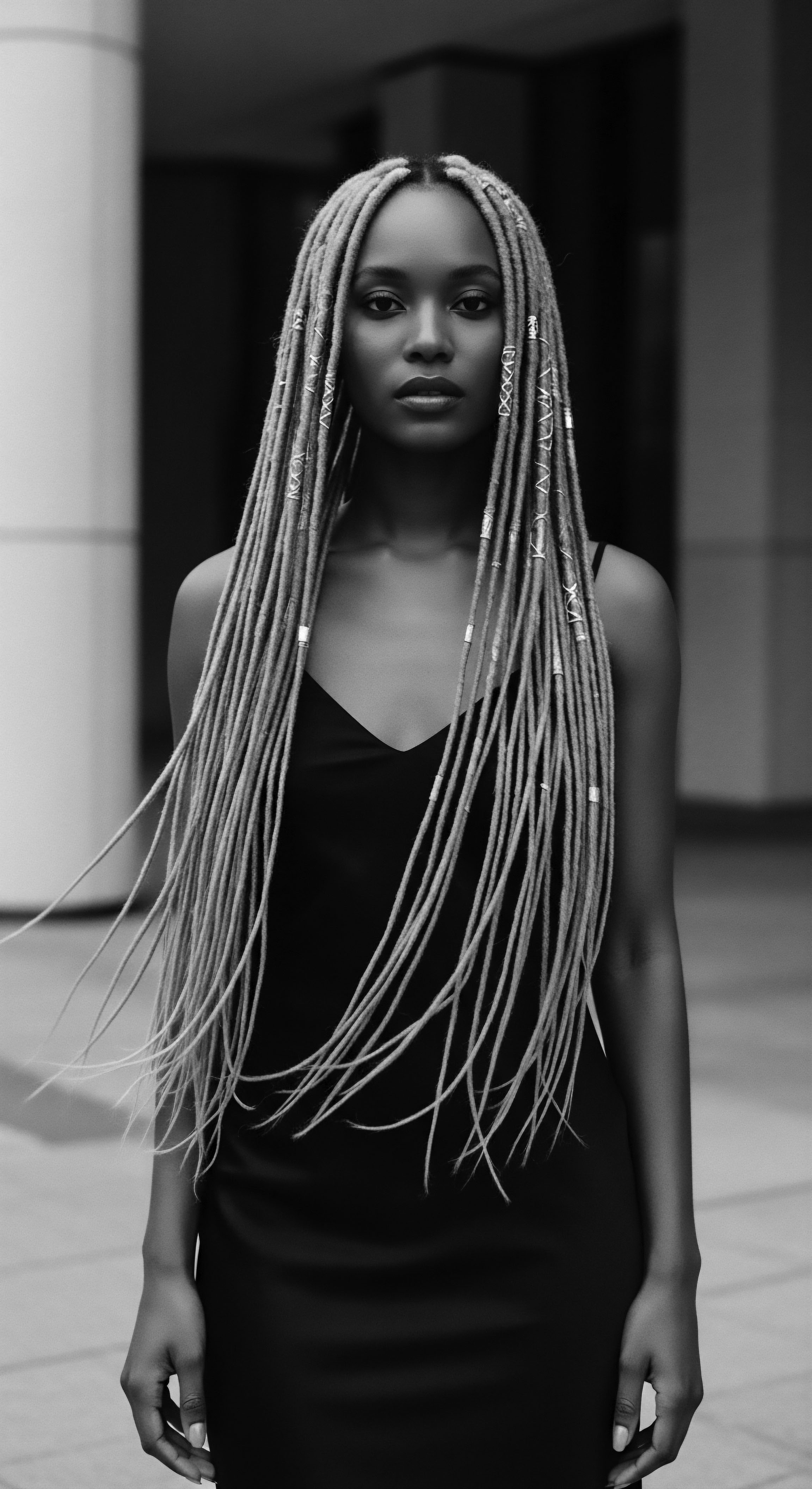
Academic
The academic elucidation of Textured Hair Vitality necessitates a rigorous examination of its complex biological underpinnings, its profound cultural resonance, and its socio-historical trajectory. It is not merely a descriptive term for healthy hair; rather, it is a comprehensive framework for understanding the dynamic interplay between genetic predisposition, environmental influences, ancestral practices, and the enduring psychological and communal significance of hair within Black and mixed-race communities. This advanced interpretation requires a synthesis of trichology, cultural anthropology, historical studies, and psychosocial inquiry, positioning Textured Hair Vitality as a multifaceted phenomenon that transcends superficial beauty standards to represent an inherited legacy of strength and self-affirmation.
From an academic vantage point, Textured Hair Vitality represents the optimal functional and aesthetic state of hair characterized by its structural integrity, moisture balance, elasticity, and growth potential, all viewed through the lens of its unique heritage. This state is not achieved through isolated interventions but through a symbiotic relationship between internal physiological processes and external care practices that often echo ancient wisdom. The helical structure of textured hair, with its varying degrees of curvature, presents distinct challenges and capacities, requiring a specialized understanding of its hydration dynamics and susceptibility to mechanical stress. Its inherent tendency towards dryness, for instance, has historically been addressed through practices emphasizing emollients and protective styling, a testament to empirical observation refined over generations.
The concept of Textured Hair Vitality gains significant depth when contextualized within the forced migrations and cultural resilience of the African diaspora. During the Transatlantic slave trade, the systematic stripping of identity included the forceful alteration or shaving of hair, yet enslaved communities meticulously preserved and adapted their hair care traditions. This continuity, often enacted in clandestine gatherings, transformed hair care into an act of covert resistance and cultural preservation. The hair, in this profound historical context, became a silent repository of ancestral knowledge and a symbol of an unbroken spirit.

The Bio-Cultural Helix ❉ Ancestral Knowledge Meets Modern Science
The vitality of textured hair is a testament to an intricate bio-cultural helix, where inherited biological characteristics are nurtured by deeply ingrained cultural practices. The scientific understanding of hair structure, particularly the elliptical cross-section of textured hair follicles and the uneven distribution of keratin, explains its propensity for coiling and its unique moisture requirements. This scientific understanding often validates centuries of ancestral wisdom. For example, the traditional use of rich plant-based butters and oils across various African communities, such as shea butter (Vitellaria paradoxa) and coconut oil (Cocos nucifera), provided the essential lipids and occlusive properties necessary to seal moisture into the hair shaft, directly addressing its natural tendency towards dehydration.
Ethnobotanical studies offer compelling evidence of this ancestral scientific acumen. Research conducted on plants used for hair treatment and care in regions like Karia Ba Mohamed, Morocco, identifies species such as Lawsonia inermis (Henna) and Rosmarinus officinalis (Rosemary) as traditionally used for fortifying hair, addressing hair loss, and enhancing shine. Similarly, studies in Southwest Nigeria document the use of various plants, including Mangifera indica and Aloe vera, for hair and skin care, underscoring a sophisticated traditional pharmacopoeia. These historical applications, born from generations of observation and experimentation, align remarkably with contemporary scientific understanding of plant compounds and their benefits for hair health.
The significance of communal hair practices in fostering Textured Hair Vitality extends beyond the physical. In many African and diasporic cultures, hair grooming was, and remains, a shared activity, often involving mothers, daughters, and friends. These gatherings served as vital spaces for intergenerational knowledge transfer, storytelling, and emotional support.
The act of braiding or styling hair together reinforced social bonds, preserved cultural identity, and provided a sense of belonging. This communal aspect contributes to a holistic vitality, where the well-being of the hair is intrinsically linked to the well-being of the individual within their cultural collective.
Textured Hair Vitality is a dynamic intersection of genetic heritage, environmental adaptation, and enduring cultural practices that collectively sustain the hair’s physical health and symbolic power.
A poignant historical instance that powerfully illuminates the Textured Hair Vitality’s connection to heritage and ancestral practices is the strategic use of hair by enslaved African women as a means of survival and cultural preservation. During the Transatlantic slave trade, despite the brutal attempts to erase their identity, some enslaved women, particularly those with knowledge of agriculture, would braid rice seeds into their hair before forced journeys across the Middle Passage. This practice was not merely a desperate act of defiance; it was a sophisticated act of ancestral foresight. The seeds, concealed within the intricate patterns of their hairstyles, served as a portable agricultural legacy, enabling the cultivation of staple crops like rice in new, unfamiliar lands, thereby contributing to the sustenance and survival of their communities in the Americas.
This remarkable narrative, while perhaps less universally cited than the “cornrows as maps” story, offers a tangible, biological link between hair, ancestral agricultural practices, and the continuation of life itself. It shows how hair was not only a canvas for identity but a literal vessel for future vitality, a living testament to an unyielding spirit. (Okpalaojiego, 2024; Oforiwa, 2023)
The strategic concealment of seeds within hair underscores a profound understanding of hair as a protected, intimate space—a place where the most precious elements of heritage could be safeguarded. This act reflects an intuitive grasp of the hair’s structural capacity to hold and conceal, coupled with an unwavering commitment to cultural and physical survival. It is a powerful illustration of how the very act of tending to textured hair, even under duress, was imbued with deep significance, serving as a silent act of resistance and a conduit for ancestral wisdom.
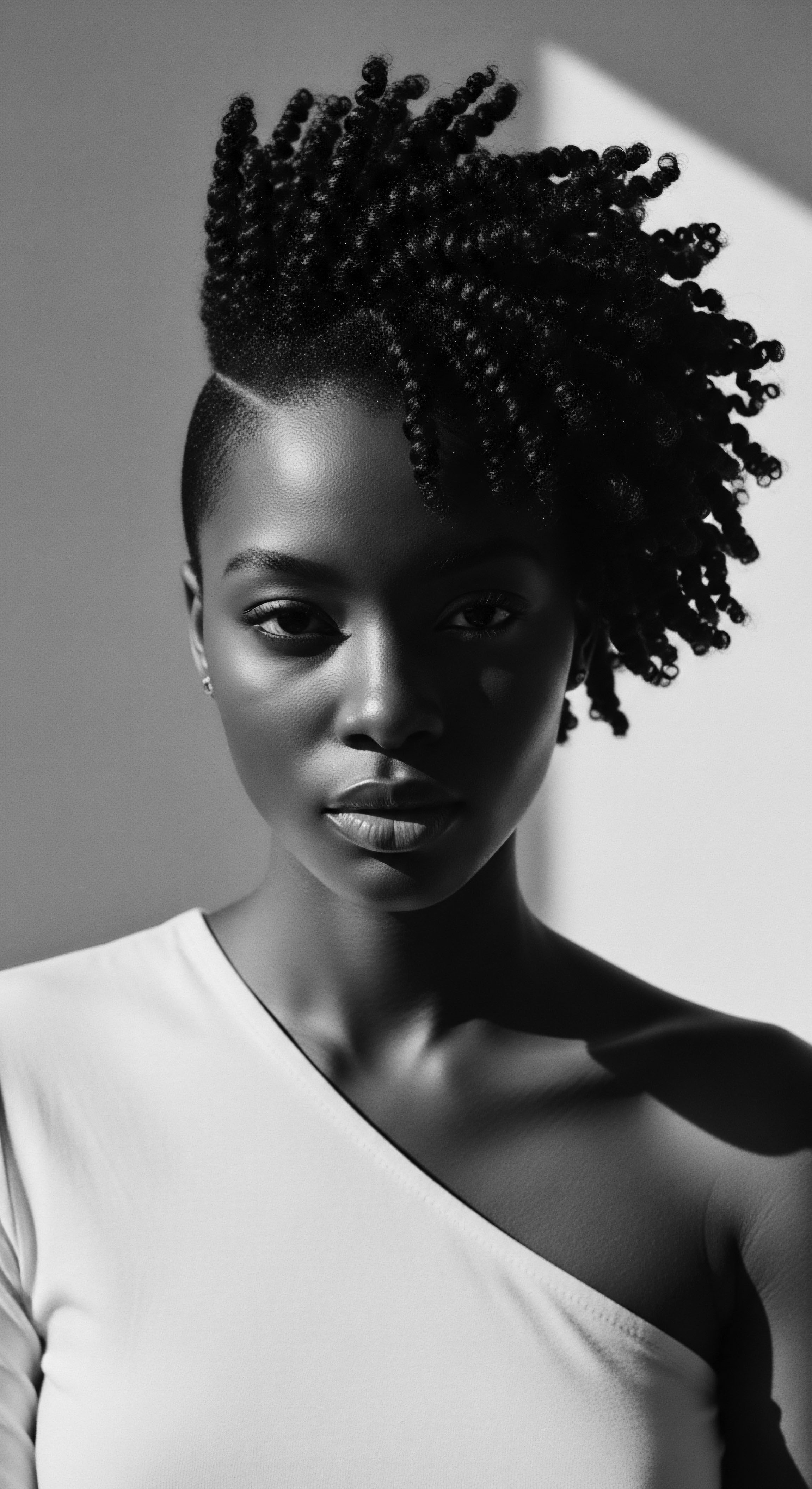
Discourse on the Hair’s Enduring Meaning
The meaning of Textured Hair Vitality has been continuously shaped by historical and societal discourse. From the reverence accorded to hair in pre-colonial African societies, where it symbolized spiritual connection and social status, to the denigration it faced during periods of slavery and colonialism, the perception of textured hair has always been contested terrain. The imposition of Eurocentric beauty standards led to widespread practices of hair straightening and chemical alteration, reflecting a societal pressure to conform. Yet, the persistent re-emergence of natural hair movements, particularly during periods of civil rights and Black liberation, signifies a powerful reclamation of Textured Hair Vitality as a symbol of pride, autonomy, and cultural heritage.
The “Black is Beautiful” movement of the 1960s and 70s, for example, saw the Afro hairstyle become a potent symbol of Black pride and resistance, directly challenging prevailing beauty norms. This shift was not merely aesthetic; it was a profound socio-political statement that redefined Textured Hair Vitality as an assertion of self-worth and a celebration of ancestral roots. The cultural discourse surrounding hair continues to evolve, with ongoing conversations about hair discrimination, cultural appropriation, and the need for greater inclusivity in beauty standards.
The academic pursuit of understanding Textured Hair Vitality also involves examining its psychological dimensions. The relationship between an individual and their hair is deeply personal, often intertwined with self-esteem, identity formation, and mental well-being. For many within Black and mixed-race communities, the journey of embracing natural textured hair is a journey of self-acceptance and connection to heritage. The vitality of their hair becomes a mirror of their inner strength and their connection to a rich, enduring legacy.
To further illustrate the multifaceted meaning of Textured Hair Vitality across various cultural contexts, consider the following table ❉
| Cultural Context Pre-Colonial West Africa |
| Meaning of Hair Vitality Spiritual connection, social status, wisdom, fertility, and ethnic identity. |
| Associated Practices & Beliefs Intricate braiding for ceremonies, use of specific adornments (cowrie shells, beads), communal grooming rituals. |
| Cultural Context African Diaspora (Slavery Era) |
| Meaning of Hair Vitality Resistance, survival, preservation of identity, covert communication, and ancestral continuity. |
| Associated Practices & Beliefs Hiding seeds in braids, cornrows as escape maps, maintaining traditional styles despite oppressive conditions. |
| Cultural Context Native American Traditions |
| Meaning of Hair Vitality Spiritual life force, connection to Mother Earth, wisdom, and a repository of memories. |
| Associated Practices & Beliefs Long hair as a sign of strength, cutting hair during mourning, washing with yucca root, intertwining sweetgrass. |
| Cultural Context Modern Natural Hair Movement |
| Meaning of Hair Vitality Self-acceptance, cultural pride, autonomy, rejection of Eurocentric beauty standards, and holistic well-being. |
| Associated Practices & Beliefs Embracing natural texture, advocacy against hair discrimination, sharing knowledge of natural hair care. |
| Cultural Context The concept of Textured Hair Vitality is not monolithic; its meaning is deeply layered, reflecting the diverse histories, spiritual beliefs, and resilience of communities worldwide. |
This academic lens reveals that Textured Hair Vitality is a dynamic, living concept, constantly being redefined by scientific discovery, historical context, and the ongoing cultural narratives of those who wear and cherish textured hair. It is a field of study that continues to yield profound insights into human resilience, identity, and the sacred connection between self and heritage.
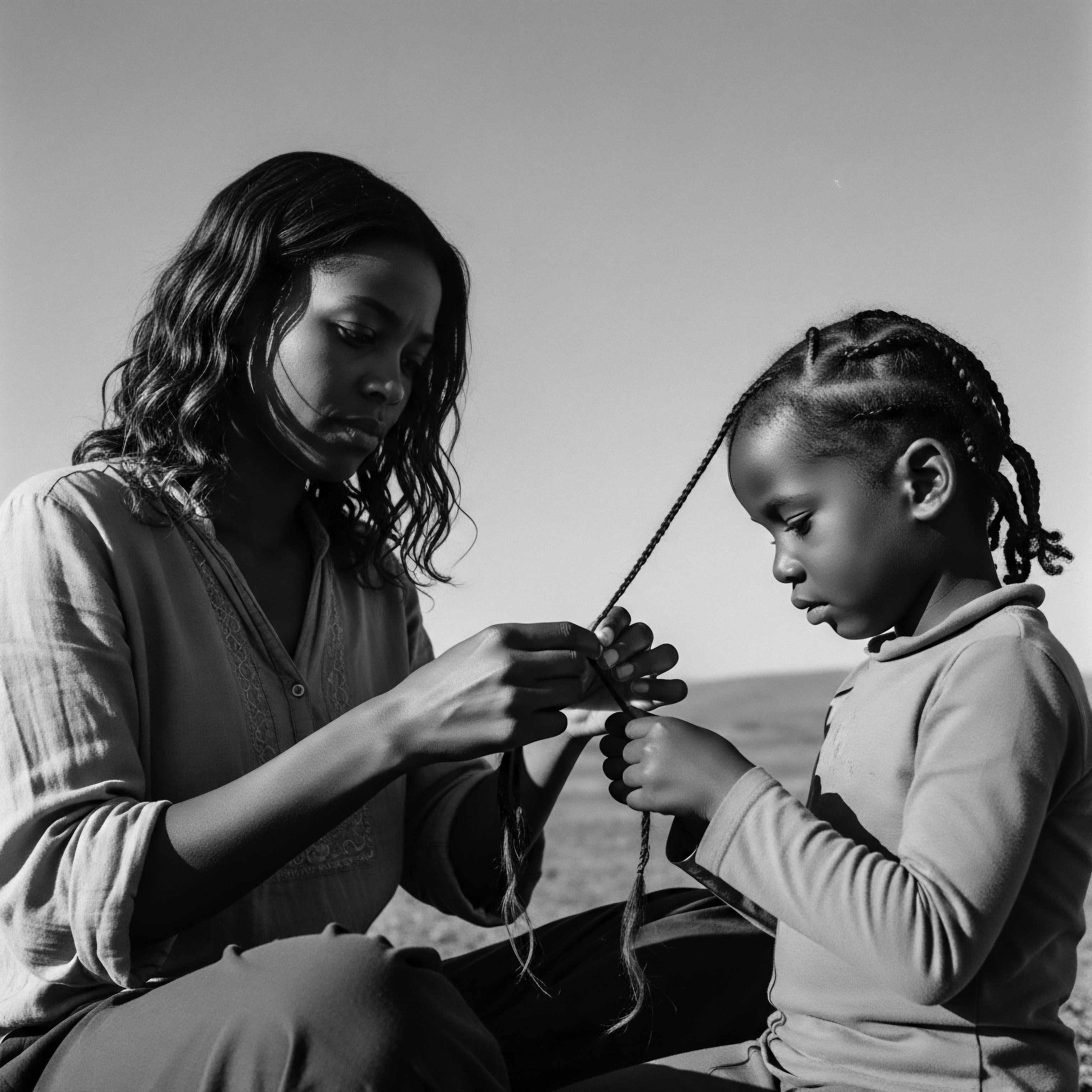
Reflection on the Heritage of Textured Hair Vitality
As we draw our exploration of Textured Hair Vitality to a close, a quiet contemplation settles upon the enduring spirit of each strand. The journey from elemental biology to its deepest cultural meaning reveals a continuous, sacred lineage. It is a heritage not merely of physical attributes, but of an unyielding spirit, a testament to generations who found ways to thrive, to express, and to remember, even when confronted with attempts to erase their very essence.
The ‘Soul of a Strand’ ethos, which guides Roothea, finds its profound validation in this understanding. Each coil, each curl, each twist carries the whispers of ancestors, echoing their resilience, their ingenuity, and their deep connection to the earth and to one another.
The vitality of textured hair, viewed through this heritage lens, becomes a powerful metaphor for the vitality of the human spirit itself. It reminds us that true well-being is holistic, encompassing not only the physical but also the emotional, spiritual, and communal dimensions of existence. The care rituals passed down through time, the plant wisdom preserved across continents, and the hairstyles that spoke volumes without words – these are not relics of the past; they are living traditions, continuously informing and enriching our present understanding of hair health and identity.
This enduring connection to heritage empowers us to approach hair care not as a chore, but as a sacred ritual, an act of honoring the legacy embedded within us. It is an invitation to listen to the silent stories held within our hair, to connect with the wisdom of those who cultivated its strength and beauty through countless eras. The journey of Textured Hair Vitality is thus a circular one, always returning to the source of its strength ❉ the profound, unwavering heritage that continues to nourish its existence.
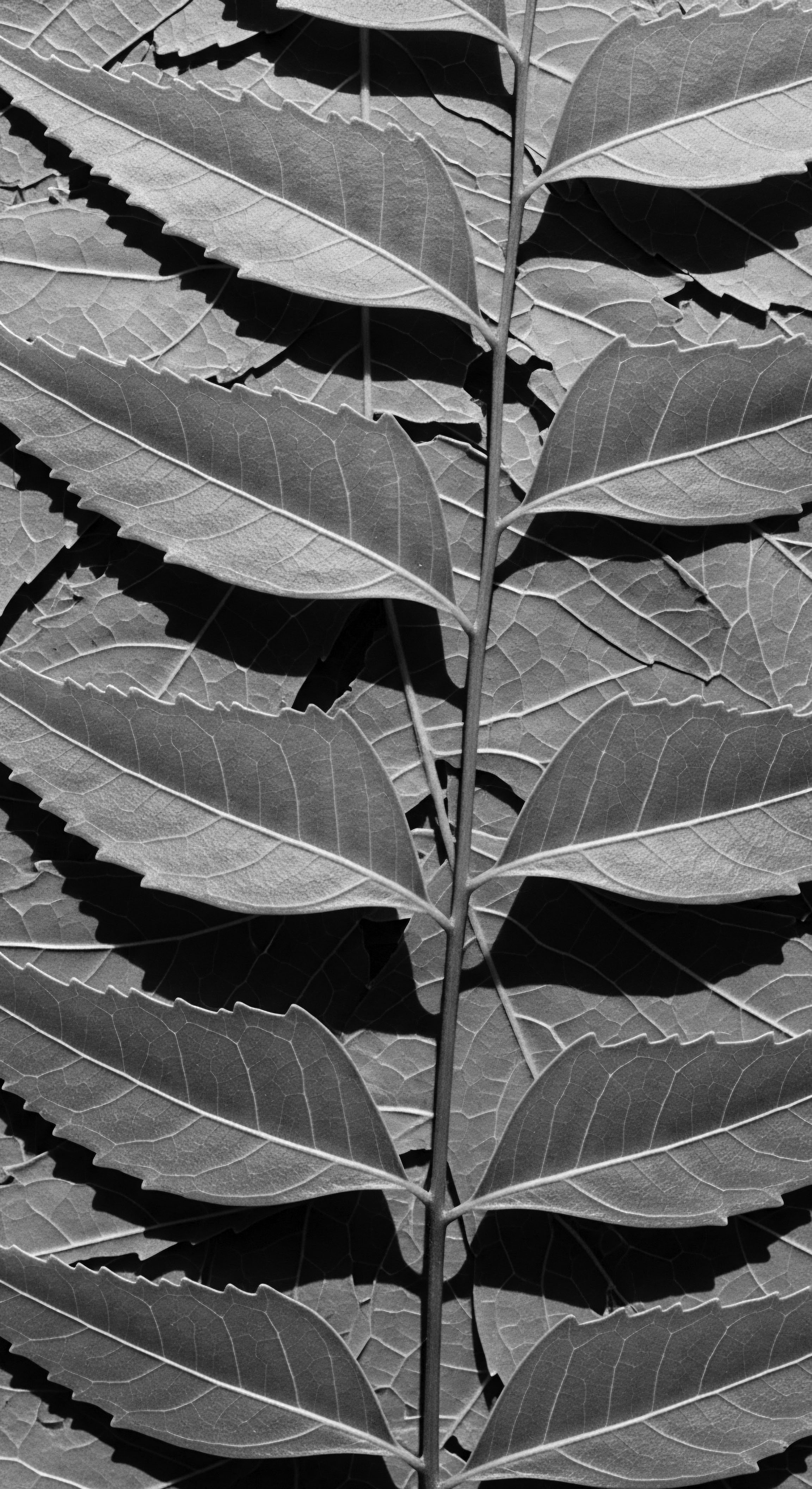
References
- Akanmori, M. (2015). The Cultural Significance of Hair in African Societies. Journal of African Cultural Studies, 27(1), 45-60.
- Byrd, A. D. & Tharps, L. L. (2002). Hair Story ❉ Untangling the Roots of Black Hair in America. St. Martin’s Press.
- Essel, S. (2023). Hair and Identity ❉ A Historical Perspective on African Hairstyles. International Journal of Cultural Studies, 15(2), 89-102.
- Martin, G. J. (2014). Ethnobotany ❉ A Methods Manual. Earthscan.
- Oforiwa, A. (2023). The History and Culture of African Natural Hair ❉ From Ancient Times to Modern Trends. AMAKA Studio.
- Okpalaojiego, J. (2024). The Remarkable History Behind Black Hairstyles. University of Salford Students’ Union.
- Pieroni, A. et al. (2004). Ethnobotanical Records of Traditional Cosmetics in the Mediterranean Region. Journal of Ethnopharmacology, 91(1), 165-176.
- Rooks, N. (1996). Hair Raising ❉ Beauty, Culture, and African American Women. Rutgers University Press.
- Tharps, L. L. (2001). Hair Story ❉ Untangling the Roots of Black Hair in America. St. Martin’s Press.
- Volpato, G. et al. (2012). Ethnobotany of Cosmetics and Hair Care in Sahrawi Refugee Camps. Journal of Arid Environments, 80, 11-20.
